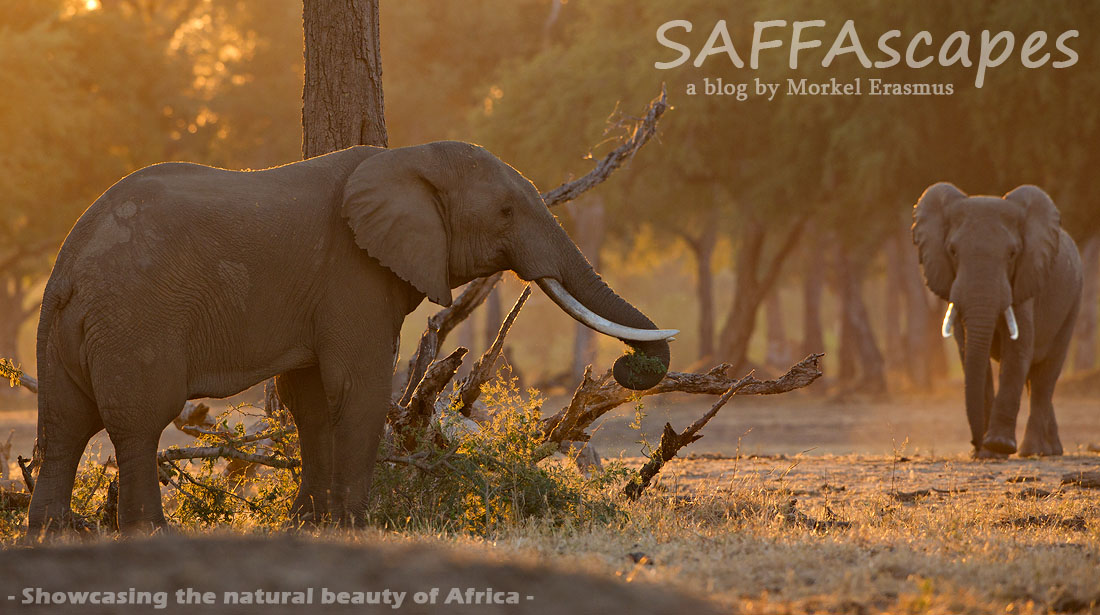During our maiden voyage to Mana, my buddy Marlon du Toit and I were fortunate to spend some quality time with one of the local packs of African Wild Dogs (also called Cape Hunting Dogs or Painted Wolves). Mana Pools is a stronghold for this species, the most endangered of Africa's predators (fewer than 4000 remain in the wild).
We located the pack again on our last afternoon of the trip, sunning themselves in a dry riverbed. We decided to venture a bit closer, and to do so meant we had to physically leopard-crawl over the coarse river sand for about 40 painstaking meters, with bare elbows and knees, carrying our cameras equipped with super telephoto lenses in one hand and our beanbags in the other hand. Progress was slow, as the going was tough and we also didn't want to cause the canines distress. When we were in a good position, still not too close to cause distress, we settled in and spent some time photographing their lazy antics.
Eventually, the alpha male got a whiff of us as the wind direction shifted. He immediately came closer to investigate. It was thrilling to look through the viewfinder as he bore down on us slowly, checking us out.
 |
| Nikon D3s | Nikkor 500mm f4 VR-II | 1.4x teleconverter | f6.3 | 1/320 SS | ISO-4000 |
When he was too close for my lens to focus, I looked up, and looked him in the eye.
 |
| Nikon D3s | Nikkor 500mm f4 VR-II | 1.4x teleconverter | f6.3 | 1/320 SS | ISO-7200 |
He walked around us, taking in our scent, and after ascertaining that we were not a threat to his pack, he did the unthinkable - he flopped down a mere 15 meters from where we were still lying motionless.
It was epic.
It was a moment that forever changed the way I see wildlife photography (well, that whole Mana Pools trip changed the way I see wildlife photography, to be honest).
 |
| Nikon D3s | Nikkor 500mm f4 VR-II | f5.6 | 1/400 SS | ISO-2500 |
To make such a direct connection with our subject was a revelation to myself and to Marlon.
We came back and vowed to share the "Mana Magic" with others.
On Friday I am going back to do just that...and hopefully the Dogs will be obliging again!
If you want to join us on our adventures in Mana Pools in 2015, then check out the details HERE.
Thanks, as always, for reading my ramblings. I'll catch you on the flipside!
Morkel Erasmus






































